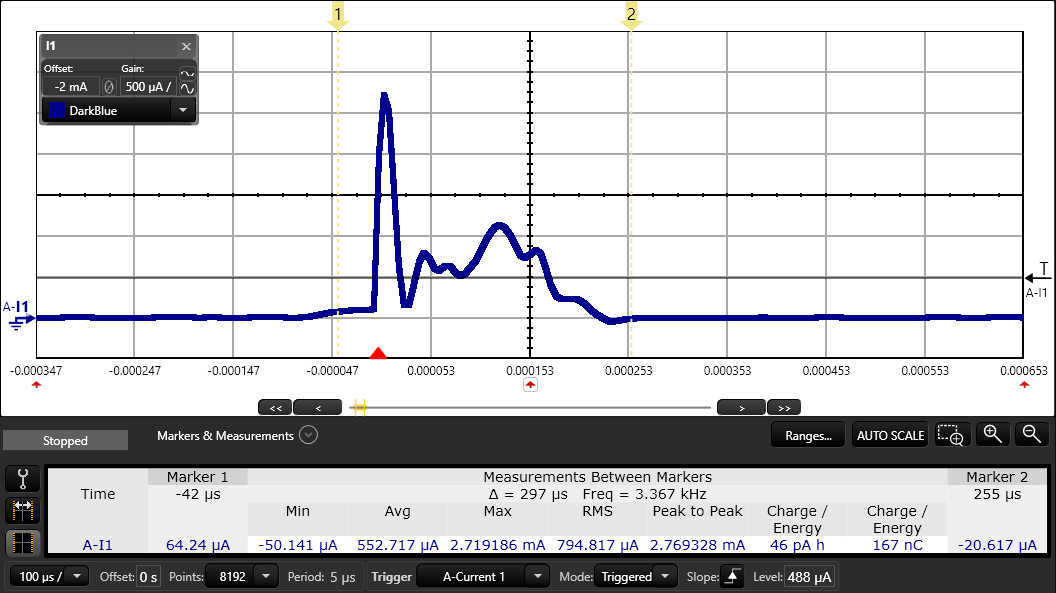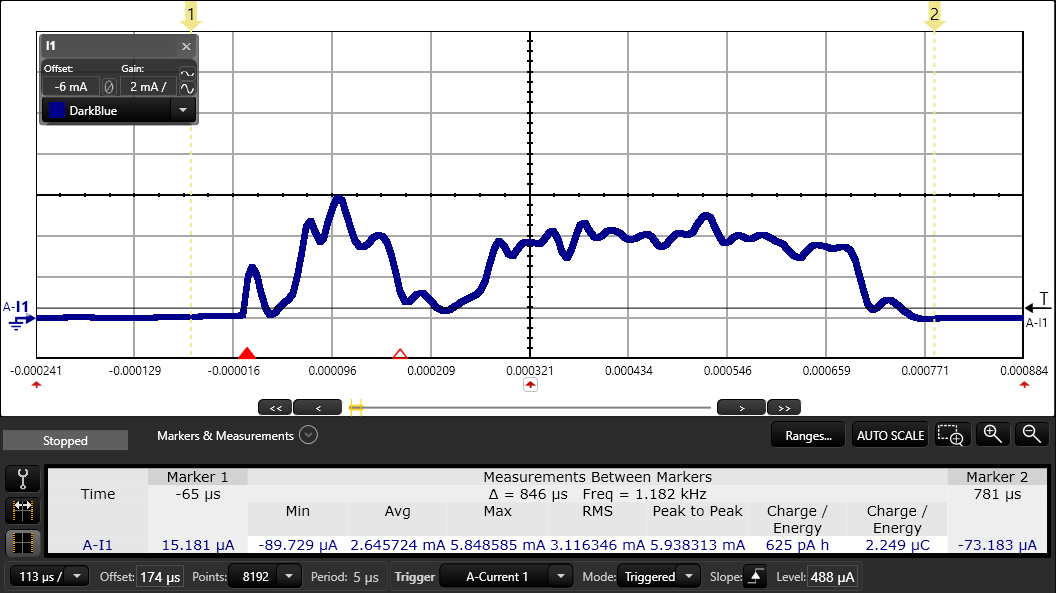SWRA578B October 2017 – April 2020 CC1312PSIP , CC1312R , CC1314R10 , CC1352P , CC1352P7 , CC1352R , CC2620 , CC2630 , CC2640 , CC2640R2F-Q1 , CC2642R , CC2642R-Q1 , CC2650MODA , CC2652P , CC2652R , CC2652R7 , CC2652RB , CC2652RSIP
3.3.1 4 MHz SPI Transfer
In the SPI transfer test, the device wakes up and sends 18 bytes of data over SPI and immediately goes back to sleep mode.
| Average Current Consumption | Unit | |||
|---|---|---|---|---|
| 1 wake-up per second | 10wake-upsper second | 100 wake-upsper second | ||
| Sensor Controller active mode | 1.1 | 2.8 | 19.3 | µA |
| System CPU | 3.2 | 21.0 | 222.8 | µA |
 Figure 16. SPI Transfer: One SPI Transmit in Active Mode
Figure 16. SPI Transfer: One SPI Transmit in Active Mode  Figure 17. SPI Transfer: One SPI Transmit from the System CPU
Figure 17. SPI Transfer: One SPI Transmit from the System CPU